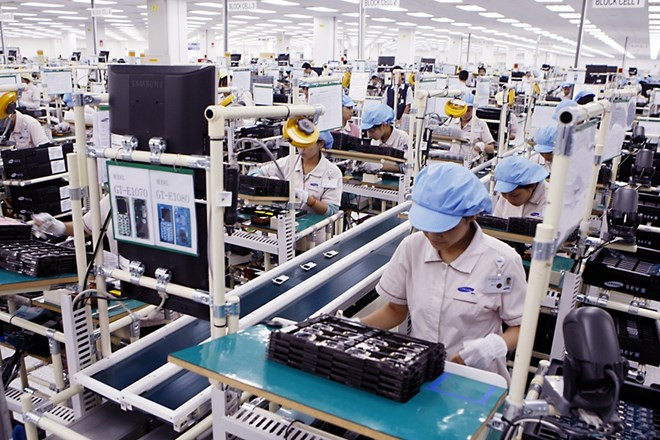Hanoi (VNS/VNA) - Vietnam’s exportshave become more sophisticated with an impressive diversification of exportsand increases in higher-value manufacturing exports, according to a recentWorld Bank (WB) report.
The report found that manufacturing exports nowaccounted for about 85 percent of total exports, up from 65 percent in 2010,driven by dynamic growth in the export-oriented foreign sector.
Higher-value manufacturing exports, such asphones, computers, cameras, electronics and related components, increased froma 5 percent share in 2010 to an estimated 35 percent in 2018.
At the same time, the share of primarycommodities fell steadily, with oil exports down from nearly 7 percent of totalexports in 2010 to about 1.3 percent in October 2018.
However, the report noted that Vietnam sufferedfrom underdeveloped supply chains, heavy reliance on imports of raw materialsand a lack of part-supplying industries.
These problems must be addressed to enhancevalue added and sustain export competitiveness amidst inevitable wageincreases, the report said.
Vietnam also maintained diversified marketdestinations for its exports with the US and China among the most importanttrade partners, according to the report.
“Having diversified export markets helped Vietnamto sustain export gains and to mitigate economic risks from external economicfluctuations,” wrote the report.
New trade agreements would give Vietnam theopportunity to increase its market access for exports and new sources offoreign investment, the report said, adding that Vietnam had already signednumerous free trade deals with two more major trade pacts on track to come intoeffect in the near future, namely the Comprehensive and Progressive Agreementfor Trans-Pacific Partnership (CPTPP) and the EU-Vietnam Free Trade Agreement(EVFTA).
“Lowering trade costs was critical to boostingexports, improving competitiveness and enhancing integration in the globalvalue chains,” the report noted.
As room for continued tariff reduction wasnarrowing, further reductions in trade costs could only be achieved by reducingcosts of non-tariff measures and logistics costs.
The report pointed out Vietnam’s high tradecosts resulted mainly from the high cost of compliance with non-tariffmeasures.
The report cited statistics that documentarycompliance time for non-tariff measures for imports in Vietnam wastwo-and-a-half times higher than the average of 28 hours of four ASEAN-4countries of Malaysia, Singapore, Thailand and the Philippines. The time fordocumentary compliance for exports in Vietnam was 50 hours, more than twice theASEAN-4 average.
The current system of non-tariff measures in Vietnamremained complex together with overlapping procedures and a lack of interagencycoordination.
“Vietnam should make every effort to establish aleast-cost and transparency system of non-tariff measures with uniform andconsistent definition and classification in accordance with internationalstandards and clear policy objectives,” the report suggested.
The establishment of a national committee ontrade facilitation and national single window was critical to enhancinginteragency co-ordination, according to the report.
According to the Ministry of Industry and Trade,Vietnam needed to participate deeply in the global value chain to promotehigh-value exports.-VNS/VNA





























